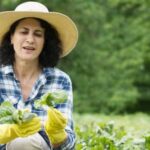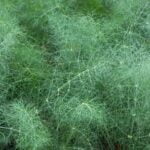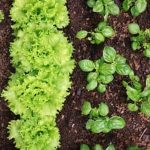Vegetable gardening in the southeast presents a unique set of challenges and opportunities for both experienced and novice gardeners. The region’s hot and humid climate, as well as its diverse soil types, create a distinctive environment for growing vegetables. Whether you’re a long-time resident of the Southeast or new to the area, understanding the ins and outs of vegetable gardening in this region is essential for success.
The Southeast’s climate varies from state to state, with some areas experiencing milder winters and others enduring scorching summers. Understanding these climate variations is crucial when determining the best vegetables to grow in your area. Additionally, the region’s soil types can range from sandy to clay-like, impacting how plants absorb water and nutrients. With this in mind, it’s important to recognize that successful vegetable gardening in the Southeast requires careful planning and thoughtful consideration.
In this section of the article, we will delve into the specific challenges and opportunities of vegetable gardening in the Southeast. We will discuss how to navigate the diverse climate and soil types found in this region while also providing valuable insights into creating a successful vegetable garden regardless of where you are located within the Southeast. By understanding these unique factors at play, you’ll be better equipped to start your own thriving vegetable garden.
Best Vegetables to Grow in the Southeast
When it comes to vegetable gardening in the Southeast, selecting the right vegetables that can thrive in the region’s hot and humid climate is crucial for a successful harvest. Fortunately, there are several heat-tolerant vegetables that not only withstand the challenging conditions of the Southeast but also produce bountiful yields. Some of the best vegetables to grow in this region include tomatoes, okra, peppers, eggplant, and sweet potatoes.
Heat-Tolerant Vegetables
Tomatoes are a popular choice for vegetable gardeners in the Southeast due to their ability to withstand the intense heat and humidity. Varieties such as “Sun Gold” and “Celebrity” are known for their resilience in hot climates. Okra is another heat-loving vegetable that thrives in the Southeast.
It not only tolerates high temperatures but also requires minimal maintenance, making it an ideal choice for beginner gardeners. Peppers, such as bell peppers and banana peppers, are well-suited for the region’s warm climate and can be prolific producers when provided with adequate sunlight and water.
Cool-Season Crops
In addition to heat-tolerant vegetables, there are also cool-season crops that perform well in the Southeast during milder months. Leafy greens like lettuce, spinach, and kale can be grown in early spring or fall when temperatures are more moderate. Root vegetables such as carrots and beets also thrive during these cooler seasons. By diversifying your vegetable garden with both heat-tolerant and cool-season crops, you can enjoy a year-round harvest in the Southeast.
By choosing the right vegetables for your southeastern garden based on its unique climate characteristics, you can set yourself up for a successful growing season. With careful planning and proper care, you can look forward to a bountiful harvest of fresh, homegrown produce from your vegetable gardening efforts in the Southeast.
Planning and Preparing Your Southeastern Vegetable Garden
Selecting the Right Location
When it comes to vegetable gardening in the southeast, one of the most important factors to consider is the location of your garden. The southeast region experiences a diverse climate, with hot and humid summers and mild winters. As such, it is crucial to choose a spot that receives plenty of sunlight and has good drainage. Additionally, consider the proximity to water sources for irrigation purposes, as well as protection from strong winds or potential flooding.
Soil Preparation and Amendments
The soil in the southeast varies widely depending on location, with some areas having sandy soil while others have clayey or loamy soils. Before planting your vegetable garden, it’s essential to test the soil and make any necessary amendments to ensure that it provides optimal growing conditions for your crops.
Adding organic matter such as compost or manure can help improve soil structure and fertility, while also aiding in moisture retention – a crucial factor in the region’s hot climate.
Dealing With Pests and Diseases
In vegetable gardening in the southeast, it’s important to be mindful of common pests and diseases that thrive in the region’s warm and humid environment. Regularly inspecting plants for signs of infestation or disease is crucial for early intervention. Consider using natural pest control methods such as companion planting, introducing beneficial insects, or using organic pesticides to manage pest issues effectively without harming the environment.
Taking these factors into consideration during the planning and preparation stages will set your southeastern vegetable garden up for success despite its unique challenges.
Southeastern Vegetable Garden Maintenance
When it comes to vegetable gardening in the southeast, there are some unique maintenance challenges that gardeners in this region face. The hot and humid climate of the southeast can create the perfect conditions for pests and diseases to thrive. As a result, it’s essential for southeastern gardeners to be proactive in pest and disease management. This includes regular inspection of plants, promoting good airflow by proper spacing, and using organic or natural pest control methods whenever possible.
In addition to pest and disease management, watering and fertilizing practices are crucial for maintaining a successful vegetable garden in the southeast. The high temperatures and humidity levels in this region can lead to rapid moisture loss from the soil, so it’s important to provide consistent watering, especially during dry periods. Mulching can also help retain soil moisture and regulate soil temperature. Fertilizing should be done regularly but cautiously, as over-fertilization can be harmful to plants.
| Maintenance Practice | Recommendation |
|---|---|
| Pest and Disease Management | Regular inspection of plants; promote good airflow by proper spacing; use organic or natural pest control methods |
| Watering | Provide consistent watering, especially during dry periods; use mulch to retain soil moisture |
| Fertilizing | Fertilize regularly but cautiously; avoid over-fertilization which can harm plants |
Overall, maintaining a vegetable garden in the southeast requires diligence and attentiveness to the specific needs of plants in this region. By implementing these maintenance practices, gardeners can overcome the challenges posed by the climate and maximize their chances of success with their southeastern vegetable gardens.
Seasonal Planting Guide for Southeastern Vegetable Gardeners
The Southeastern region of the United States offers a unique climate and soil type that presents both challenges and opportunities for vegetable gardening. The hot and humid climate can be daunting for many gardeners, but with the right knowledge and planning, it is possible to have a successful vegetable garden in this region.
When planning your vegetable garden in the Southeast, it is important to consider the specific planting times for various vegetables. Here is a seasonal planting guide to help Southeastern vegetable gardeners maximize their yields:
- Spring (March-May): This is the ideal time to plant warm-season crops such as tomatoes, peppers, cucumbers, and squash. It’s also a great time to start planting heat-tolerant herbs like basil and oregano.
- Summer (June-August): While the heat can be intense during the summer months, you can still plant some heat-tolerant vegetables such as okra, sweet potatoes, southern peas, and watermelon.
- Fall (September-November): As temperatures start to cool down, it’s a good time to plant cool-season crops such as lettuce, kale, broccoli, carrots, and radishes.
It’s important to note that these planting times may vary slightly depending on your specific location within the Southeast. Be sure to check with your local extension office or gardening resources for more tailored guidance based on your exact location.
Southeastern vegetable gardening also requires attentiveness to monthly changes in weather patterns. By staying updated with these changes month by month you can ensure an optimal harvest from your garden.
With careful planning and attention to detail when it comes to seasonal planting, Southeastern vegetable gardeners can make the most out of their unique climate conditions and enjoy a bountiful harvest throughout the year.
Tips for Maximizing Yields in Your Southeastern Garden
When it comes to vegetable gardening in the southeast, maximizing yields can be a challenge due to the region’s unique climate and soil conditions. However, there are several techniques that gardeners can employ to increase their harvests. One of the most important factors to consider is crop selection.
Choosing heat-tolerant vegetables that thrive in the hot and humid conditions of the southeast is crucial. Some examples of heat-tolerant vegetables include okra, sweet potatoes, and southern peas. These vegetables are well-suited to the region’s climate and are more likely to produce a bountiful harvest.
Another key strategy for maximizing yields in your southeastern garden is proper spacing and plant arrangement. Crowding plants can lead to competition for water and nutrients, resulting in lower yields. It’s important to follow spacing recommendations for each type of vegetable and consider using companion planting techniques to maximize space and encourage healthy growth. For example, planting marigolds around tomato plants can help repel pests and improve overall plant health.
Additionally, implementing good soil management practices is essential for maximizing yields in your southeastern garden. Conducting regular soil tests will provide valuable information about the nutrient levels in your soil, allowing you to make informed decisions about fertilization and soil amendments. Adding organic matter such as compost or aged manure can improve soil structure and fertility, leading to healthier plants and higher yields.
Overall, with careful planning, proper plant selection, thoughtful spacing, and good soil management practices, gardeners can maximize their yields when vegetable gardening in the southeast.
| Technique | Benefit |
|---|---|
| Proper crop selection | Choosing heat-tolerant vegetables suitable for the region’s climate |
| Spacing and plant arrangement | Preventing competition for water and nutrients among plants |
| Soil management | Improving soil structure and fertility through proper fertilization and amendments |
Building Community and Sharing Resources in Southeastern Vegetable Gardening
Community involvement and resource sharing are essential components of successful vegetable gardening in the Southeast. The unique climate and soil conditions of the region require a collaborative approach to gardening, with experienced gardeners sharing their knowledge and resources with newcomers. Community gardens provide an excellent opportunity for individuals to learn from each other, share tools and seeds, and work together to overcome the challenges of gardening in the Southeast.
Local networks play a crucial role in connecting vegetable gardeners in the Southeast. These connections provide an avenue for sharing tips, experiences, and resources specific to the region. Gardening clubs, online forums, and social media groups are valuable platforms for gardeners to exchange information and seek advice from others facing similar challenges. By participating in local networks, vegetable gardeners can build a supportive community that fosters learning and growth.
In addition to building community relationships, utilizing local resources is key to successful vegetable gardening in the Southeast. Local agricultural extension offices offer valuable educational programs, workshops, and expert advice tailored to the region’s specific climate and soil types.
Furthermore, seed swaps, farmers’ markets, and cooperative purchasing initiatives allow gardeners to access high-quality seeds, plants, tools, and supplies while supporting local businesses. Embracing these community-based resources strengthens the foundation of vegetable gardening in the Southeast and contributes to the overall success of individual gardeners.
Success Stories From Southeastern Vegetable Gardeners
In conclusion, vegetable gardening in the Southeast presents both challenges and opportunities for gardeners in the region. The hot and humid climate, as well as the diverse soil types, provide a unique environment for growing a wide variety of vegetables. By carefully selecting heat-tolerant and cool-season crops, gardeners in the Southeast can enjoy bountiful harvests throughout the year.
As highlighted in this article, careful planning and preparation are essential for success in vegetable gardening in the Southeast. Selecting the right location for your garden and properly preparing the soil are key steps to ensure healthy and productive plants. Additionally, staying on top of pest and disease management, as well as fine-tuning watering and fertilizing practices, will contribute to a successful harvest.
Furthermore, building a sense of community among vegetable gardeners in the Southeast can provide valuable support and resources for individuals looking to maximize their yields and share their successes with others. By sharing knowledge and experiences, as well as participating in local networks and community gardening initiatives, Southeastern vegetable gardeners can enhance their gardening endeavors and create a thriving community of passionate growers.
With careful planning, dedication, and support from fellow gardeners, anyone can achieve success in vegetable gardening in the Southeast.
Frequently Asked Questions
What Vegetables Grow in the Southeast?
The Southeast region of the United States is suitable for growing a variety of vegetables. Some commonly grown vegetables in this region include tomatoes, peppers, okra, sweet potatoes, collard greens, cucumbers, and snap beans. The warm and humid climate of the Southeast provides favorable conditions for these crops to thrive.
What Is a Good Layout for a Vegetable Garden?
A good layout for a vegetable garden involves planning the placement of crops to optimize sunlight exposure and spacing for efficient growth. Planting taller crops such as corn or trellised plants on the north side of the garden helps prevent shading smaller plants. Grouping plants with similar water and sunlight needs together also simplifies watering and maintenance.
Which Direction Is Best for Vegetable Garden?
The best direction for a vegetable garden is typically east to west orientation. This allows the garden to receive full sun exposure throughout the day without any one area being shaded for an extended period. However, local factors such as existing structures or trees may influence the ideal direction for a specific vegetable garden layout.

If you’re looking to get into vegetable gardening, or are just looking for some tips on how to make your current garden better, then you’ve come to the right place! My name is Ethel and I have been gardening for years. In this blog, I’m going to share with you some of my best tips on how to create a successful vegetable garden.





